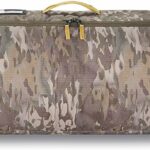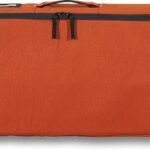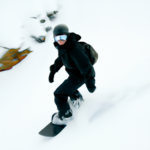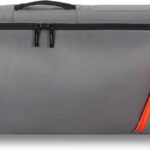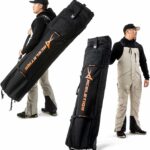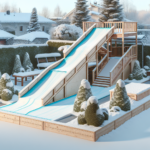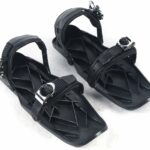As a passionate snowboarder, braving the freezing temperatures is just part of the thrill. But those icy conditions can take a toll on your feet, right? The chill seeping through your boots, transforming your toes into cold, numb blocks can ruin an otherwise fantastic day on the slopes. “How To Keep Your Feet Warm Snowboarding?” offers invaluable tips, tricks, and strategies, giving you the knowledge to combat these icy intrusions. Prepare to confidently head out onto the snow, fully equipped to keep those toes toasty, no matter how low the mercury drops.
Understanding the importance of keeping feet warm while snowboarding
Enjoying the thrill of snowboarding comes with its own share of challenges, one of which is keeping your feet warm. If you’ve ever had the unpleasant experience of chilly feet while swooping down the glittering snow slopes, you’d know how crucial it is to keep your feet warm. Not only does it add to your comfort, but it directly impacts the overall snowboarding experience.
The connection between feet temperature and overall body heat
People often overlook the role of feet in regulating body heat. These extremities are just like the hands in that they play a pivotal part in maintaining your body’s thermal balance. If your feet are cold, it can make your entire body feel cold, therefore ruining your snowboarding experience.
Implications of cold feet on snowboarding performance
Cold feet can negatively impact your snowboarding performance, as the discomfort can be distracting. Decreased body temperature can also cause fatigue, reducing endurance and overall performance. Furthermore, severe cold can lead to loss of sensation, impairing balance and coordination—two vital elements for successful snowboarding.
Health risks associated with cold feet
Having cold feet for prolonged periods might lead to more serious health issues such as frostbite or hypothermia, which are medical emergencies. Frostbite can cause the tissue in your feet to freeze, risking permanent damage. On the other hand, in hypothermia, your body loses heat faster than it can produce, causing life-threatening complications.
Analysing the factors that contribute to feet getting cold
Various factors can contribute to your feet getting cold while snowboarding. Understanding these factors can provide insights that would help you manage them better.
Cold and wet environment
Snowboarding in a cold and wet environment tests your body’s ability to maintain heat. Walking through snow or puddles can lead to wet feet – a surefire way to decrease feet temperature.
Inappropriate or poor quality snowboarding gear
Your choice of gear significantly influences your comfort and warmth on the snow slopes. Poor quality snowboarding boots or socks that don’t provide adequate insulation can make your feet cold in no time.
Individual health conditions
Individual health conditions like Raynaud’s disease or poor circulation can make your feet more susceptible to cold. Such conditions require additional measures to keep your feet warm during snowboarding.
Choosing the right snowboarding socks
Just as tires are critical to a car, socks are crucial for snowboarding. They provide the first layer of insulation for your feet against cold and must be chosen with great care.
Importance of material: Wool versus synthetic
Wool and synthetic fabrics are popular choices for snowboarding socks. Wool naturally provides excellent insulation and wicking capabilities. But if you’re allergic to wool, synthetic materials can be good alternatives as they offer similar features.
The Fit: How to ensure your snowboarding socks fit well
Your socks should fit snugly without being too tight, and the length should be right, not folding over or bunching up. Ill-fitting socks can lead to cold spots and discomfort while snowboarding.
Layers: Is it beneficial to wear multiple pairs of socks?
While it might be tempting to double up your socks for extra warmth, it isn’t advisable. Wearing multiple pairs can make your boots too tight, restricting blood flow and, ironically, making your feet colder.
Selecting the best snowboarding boots to keep feet warm
Choosing the right snowboarding boots is crucial in your pursuit of keeping feet warm.
Key features to look for in snowboarding boots
Look for boots with good insulation, waterproofing, and a well-structured cushioning system. These features help to keep your feet warm, dry and comfortable, enhancing your snowboarding experience.
Proper boot fitting: Using the ‘shell fit’ method
A properly fitted boot can greatly improve your warmth. The ‘shell fit’ method entails, initially trying the boots without the liner in order to gauge an appropriate fit. The aim is to find a boot that provides a snug fit without compressing your feet.
Understanding boot insulation ratings
Know the insulation ratings of the boots you choose. Higher ratings denote better insulation. It’s important to strike a balance between insulation and comfort.
Implementing pre-boarding warming strategies
Being proactive and warming up before snowboarding can make a significant difference to your feet temperature.
Benefits and methods of pre-warming your boots
Pre-warming your boots before wearing them can help keep your feet warm for longer. You can do this by storing them in a warm area or using a boot heater.
Hydrating and properly fueling your body before snowboarding
Consuming a decent meal and staying hydrated can help your body generate necessary heat to keep you warm.
Exercises and stretches to boost circulation
Simple exercises and stretches can boost blood flow, which naturally helps to warm your feet.
Using foot warmers or heated insoles
Foot warmers or heated insoles can be a game-changer when it comes to keeping your feet warm on the snow.
Overview of how foot warmers work
Foot warmers, similar to hand warmers, emit heat when exposed to air. Heated insoles usually function on batteries, generating heat within your boots.
The safety and comfort of heated insoles
Heated insoles are generally safe and comfortable to use, as they have temperature regulation features that prevent overheating.
Choosing the best foot warmers or heated insoles for snowboarding
When selecting foot warmers or heated insoles, consider factors like duration of heat, comfort, safety, cost, and convenience.
Managing sweat and moisture
While you can’t prevent your feet from sweating, managing moisture effectively can contribute to the comfort and warmth of your feet.
Importance of moisture-wicking socks
Moisture-wicking socks draw sweat and moisture away from your skin, keeping your feet dry and warm.
Drying your boots effectively after each snowboarding session
Following every session, ensure that you dry your boots properly. Trapped moisture can lead to cold feet the next time you use your boots.
Using antibacterial powders or sprays to manage moisture
These products can not only help manage moisture but also prevent the growth of bacteria and fungi in your boots.
The role of circulation in keeping feet warm
As feet are at the body’s extremity, maintaining good circulation is crucial for keeping them warm.
Impact of tight boots or socks on circulation
Wearing tight socks or boots can restrict blood flow to your feet, thereby making them cold.
Exercises to improve foot circulation off and on the snowboarding slope
Simple foot exercises such as ankle rolls, toe lifts, or calf stretches can aid circulation.
How breaks can help in maintaining circulation
Taking periodic breaks can help improve blood flow, warming your feet, and increasing your overall comfort.
Considering battery-heated snowboarding gear
Battery-heated gear is a handy innovation in fighting cold feet.
How battery-heated socks and boots work
These socks and boots have built-in heating mechanisms powered by rechargeable batteries. They can deliver consistent heat for extended periods.
Pros and cons of switching to battery-heated gear
While battery-heated gear can provide excellent warmth and comfort, they are usually more expensive. Also, they can require regular charging, which may be inconvenient.
Review of top battery-heated snowboarding gear
Several manufacturers offer battery-heated socks and boots. While selecting, consider factors like battery life, comfort, heating coverage, and adjustability of heat settings.
Regular maintenance and assessment of gear
Regular maintenance and timely assessment of your snowboarding gear are crucial in keeping your feet warm.
Signs of wear and tear that could compromise warmth
Look out for signs of wear and tear in your boots, such as thinning of insulation, which could compromise the warmth.
Maintaining boots and foot warmers: cleaning and storage habits
Proper cleaning and storage of your boots and foot warmers can prolong their lifespan and effectiveness.
When to opt for professional boot fitting or changes in gear
If despite all efforts, you have constant issues with cold feet or discomfort, it might be time to reconsider your gear. Professional boot fittings or investing in new, well-insulated gear can make a world of difference.
In conclusion, keeping your feet warm while snowboarding is multi-factorial. From the right socks, well-insulated boots, regular gear maintenance, to warming strategies and proper circulation, every aspect plays an important role. So, keep these tips in mind the next time you hit the slopes, and you’ll be set for a warm, comfortable, and thrilling snowboarding experience.
- What Snowboard Bindings Should I Get? - January 23, 2024
- What Size Screws For Snowboard Bindings? - January 23, 2024
- How To Snowmobile On Water? - January 23, 2024

